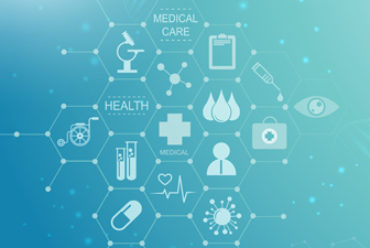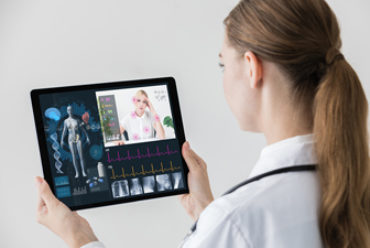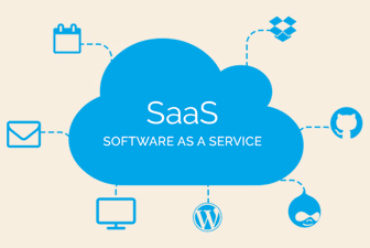Telemedicine Terminologies, Offerings & the Future

Telemedicine Terminologies, Offerings & the Future
By: Faiz B. Khan
June 21, 2020
The relevance of Telemedicine has increased massively during the Global Covid-19 crisis. With Coronavirus having a huge impact on the entire world, the importance of educating oneself on new age terminologies, differences and the overall trajectory of the entire medical services industry is becoming increasingly important for the provider and the consumer.
This blog is written to help you educate yourself on the fast-paced world of technology and medicine.
To start off let’s talk about the various Terminologies used in the industry.
What are the terminologies in Virtual healthcare?
Since Telemedicine is a relatively unexplored area for many, the jargons being used among the providers, policy makers & healthcare organisations can often be confusing and so self-education is imperative. Some of the commonly used words and their definitions are listed below.
-
- Telemedicine
Telemedicine is the use of information technology & telecommunications technology for the provision of clinical services.
-
- Telehealth
Telehealth focuses on all health services of which telemedicine is a subset.
Don’t worry if you’re still not able to understand the difference. A more in-depth difference is provided in the section below.
-
- Digital Medical Devices
DMD refers to the hardware equipment used to monitor and analyze the body, for example, blood pressure cuffs, glucometers, pulse oximeters and many other measuring devices.
-
- Electronic Medical Record (EMR)
EMR refers to the digital software that enables the storage, retrieval, and modification of patient records.
-
- Electronic Health Record (EHR)
EHRs commonly contain billing information, vital signs, medical history, and more.
“Both an EMR and EHR are digital records of patient health information. An EMR is best understood as a digital version of a patient’s chart. By contrast, an EHR contains the patient’s records from multiple doctors and provides a more holistic, long-term view of a patient’s health.”
With the digitization revolution, gone are the days of storing rooms filled with paper. The whole process has become much more streamlined, saving money, time & effort. All data is updated in real-time and available to multiple users simultaneously.
-
- Encryption
This term has everything to do with security and privacy. Encryption refers to the protection of data by the process of “coding” it or “en-coding”. Only the computers that have been given access will hold the ability to “de-code” and view the information contained therein. With encryption, the data is much safer that the traditional methods of storing and accessing patient data.
-
- Originating Site
Also referred to as the patient location, the originating site is the patient’s location when they received Virtual healthcare services.
-
- Remote Monitoring
The remote & real time transfer of data to the Healthcare practitioners and the staff from digital medical devices.
-
- Video Conferencing
The transmission of digital video images in real-time between multiple locations.
Now let’s get to the afore-mentioned difference between Telehealth and Telemedicine:
Let’s start with Telehealth. The Health Resources Services Administration defines telehealth as “the use of electronic information and telecommunications technologies to support long-distance clinical health care, patient and professional health-related education, public health and health administration. Technologies include videoconferencing, the internet, store-and-forward imaging, streaming media, and terrestrial and wireless communications.”
Telehealth includes a broad range of technologies and services used to provide patients with care and enhance the entire healthcare delivery system. Furthermore, it can include any remote non-clinical services being offered as well. For example, a medical college could be offering its classes to its students online, and this would come under Telehealth. Another example of Telehealth could be a new mobile application introduced by the government to warn its citizens about a potential virus outbreak.
ON the other hand, the FCC defines telemedicine as “… using telecommunications technologies to support the delivery of all kinds of medical, diagnostic, and treatment-related services, usually by doctors.” The AAFP defines telemedicine as “… the practice of medicine using technology to deliver care at a distance.”
In short, Telemedicine refers to the use of technology to deliver healthcare services to patients. It concerns only patients and doctors and is used in places where normal modes of communication may not be available. For example, if a disabled patient who uses a wheelchair needs to consult their doctor quickly and can successfully complete their consultation via secure video call, they would definitely opt for and benefit from Telemedicine, if it is available.
What exactly is the difference?
In simple terms Telehealth is different from Telemedicine in that it refers to a broader scope of remote health care services when compared with Telemedicine. Telemedicine refers specifically to remote clinical services, while Telehealth can refer to remote non-clinical services as well. You can think of Telehealth as being a broad umbrella under which Telemedicine can be found. This makes Telemedicine a sub section of Telehealth. In other words, Telehealth includes Telemedicine, but Telemedicine does not necessarily always include Telehealth.
Both are part of the larger effort to expand access to care, make health management easier for patients and improve the efficiency of the healthcare delivery network.
What telemedicine Software solutions are available?
There are different features when it comes to providing telemedicine software solutions. Let’s explore the different levels being provided by telemedicine providers.
-
- Video Call
Video consultation is becoming a more widely adopted strategy which makes it easier along with being more time and cost effective for both the providers and the consumers. Video calls are used for in-home care, ambulatory care, and acute care. Video calls are revolutionizing the reach of telemedicine services allowing the providers to reach rural areas as well. Patients can talk to their doctors straight from their laptop or other handheld devices.
-
- Virtual Clinics & Waiting Rooms (triage)
With online waiting rooms, patients can arrive at an emergency department and be seen by an off-site physician using video calling. The off-site physician can order tests or determine a treatment plan, which moves patients through the system faster. Since emergency rooms often have long wait times, overcrowding and staff shortages, online waiting rooms can help with optimal resource allocation. AI can be used to move up cases that are more severe while the less critical ones can wait a little longer. All through the online virtual waiting rooms.
-
- With EMR
With EMR, physicians can access a patient’s complete medical history without being onsite and without having to go through a lengthy process of accessing the data. The data is quite literally a click away. This cuts down the amount of time that physicians dedicate to administrative tasks. As a result, physicians can see more patients or spend more time with those cases that require more attention.
-
- With Billing Solution
Like an onsite clinic, patients can check-in for walk-in or scheduled visits, complete an intake form, and make payment online. Payments can be done through various payment gateways that make it easier for both parties involved.
What is the future of Telehealth?
With exponential advancements in technology, the future of telehealth is very bright and holds enormous potential for innovation and growth of the entire sector. The numbers of telemedicine providers and users is sharply increasing globally. Listed below are some of the innovations that we will be seeing soon.
-
- Online Medical Centers
The availability of healthcare 24/7 through online collaborative platforms for patients, providers, and staff. Remote physicians with telemedicine platforms using mobile monitoring devices will change the way health services are provided and consumed throughout the world!
-
- Telemedicine Across Borders
Technology is becoming more and more robust; the future of telehealth will most definitely include international collaboration. Allowing the brightest minds to collaborate on the most complex health problems. The less developed countries can also benefit greatly from the knowledge & expertise of the developed countries as geographical boundaries won’t hamper the growth of the healthcare industry anymore. Anyone can thus have access to the best doctors of the world!
-
- More Acceptability
As patients experience the reduced wait times and greater access to care, the hesitation regarding telemedicine will decrease. Physicians will also notice better patient outcomes and more revenue without an increased workload.
-
- Collaboration between Telemedicine Systems
The future of telehealth will likely include enhanced sharing capabilities that will allow for patients to adequately care for no matter where they are. The sharing of data between various EMR software will increase as integration between various EMR platforms becomes easier.
-
- Augmented Reality
The future of telehealth likely includes augmented reality mirrors. The system will combine augmented reality and adaptive image transformation for diagnostics and patient monitoring. With better imaging provided by augmented reality mirrors, providers can better diagnose eye problems, skin problems, and even breast cancer.
Telemedicine experts, like Vicenna Healthcloud, can walk organizations through how successful practices have done it. Learn more about Vicenna’s Telemedicine solution for Hospitals that provides all of the features listed above.




